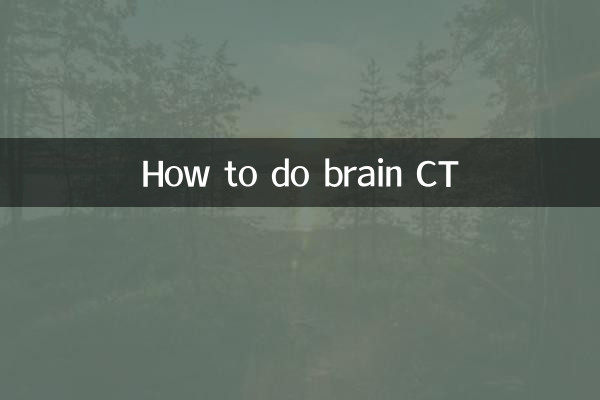How to do brain CT
Brain CT (computed tomography) is a common medical imaging technique used to diagnose brain disease or injury. In recent years, with the advancement of medical technology, brain CT has become more and more widely used. This article will introduce in detail the examination process, precautions and related hot topics of brain CT to help you better understand this examination method.
1. Brain CT examination process

The examination process of brain CT usually includes the following steps:
| step | Specific content |
|---|---|
| 1. Appointment registration | Patients need to make an appointment at the hospital in advance and bring relevant medical records and examination sheets. |
| 2. Preparation | Remove metal objects from the head (such as hairpins, earrings, etc.) and change the examination gown if necessary. |
| 3. Posture | The patient lies flat on the examination table with his head fixed in the scanner. |
| 4. Scanning process | The scanner rotates around the head to collect images from multiple angles, and the entire process is painless. |
| 5. End of inspection | After the doctor confirms the image quality, the patient can leave and wait for the results. |
2. Precautions for brain CT
In order to ensure the accuracy and safety of the examination, patients need to pay attention to the following matters:
| Things to note | illustrate |
|---|---|
| 1. Pregnant women should do this with caution | CT examinations contain radiation, so pregnant women should be cautious and consult a doctor if necessary. |
| 2. Child protection | Additional protective measures must be taken during examinations of children to reduce the impact of radiation. |
| 3. History of allergies | If you need to inject contrast media, you need to inform your doctor in advance if you have any allergies. |
| 4. Check time | Usually 10-30 minutes to complete, specific time will vary depending on equipment and personal circumstances. |
3. Recent hot topics and hot spots related to brain CT
In the past 10 days, hot topics about brain CT have mainly focused on the following aspects:
| hot topics | Summary of contents |
|---|---|
| 1. AI-assisted diagnosis | Artificial intelligence technology is gradually applied to brain CT image analysis to improve diagnostic efficiency. |
| 2. Low-dose CT technology | New low-dose CT technology reduces radiation and is more suitable for children and those who undergo frequent examinations. |
| 3. Stroke screening | Brain CT has become an important tool for rapid diagnosis of stroke, saving patients’ lives. |
| 4. Inspection fees | Medical insurance policies in many places have been adjusted, and the cost of brain CT examinations has been reduced, benefiting more patients. |
4. Frequently Asked Questions about Brain CT
The following are questions and answers frequently asked by patients:
| question | answer |
|---|---|
| 1. Does brain CT have radiation? | Yes, but the dosage is within a safe range and usually does not cause harm to the body. |
| 2. Is it necessary to fast before the examination? | Generally not required unless specifically requested by the doctor (such as injection of contrast media). |
| 3. What is the difference between brain CT and MRI? | CT is faster and suitable for acute diseases, while MRI has no radiation but is longer and more expensive. |
5. Summary
Brain CT is a safe and efficient examination method and is widely used in the diagnosis of brain diseases. As technology advances, its accuracy and security continue to improve. If you have relevant needs, it is recommended to consult a professional doctor and choose the appropriate examination method according to the specific situation.

check the details

check the details